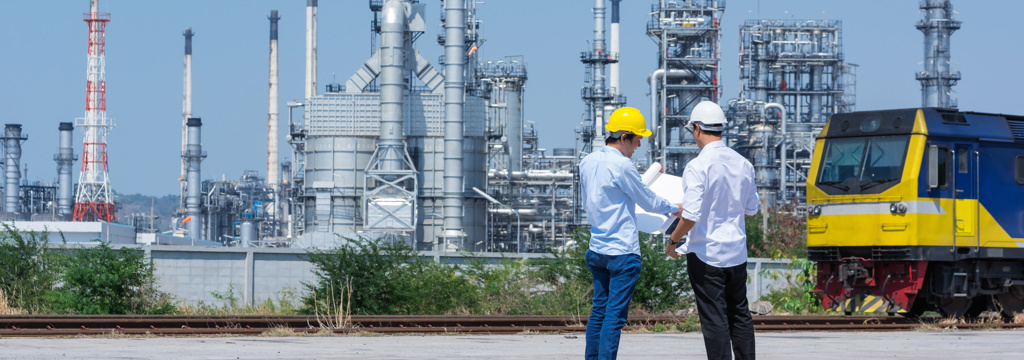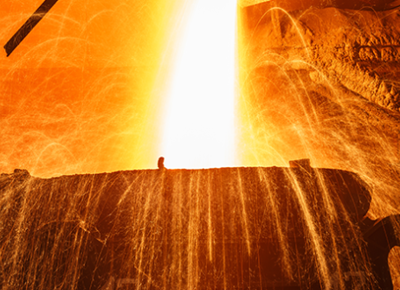Risk Assessing for Maintenance Work – Some Thoughts

What is Risk Assessment?
Risk Assessment means many things to many people. The importance of risk assessments to identify hazards and the levels of rigour applied to this will vary from culture to culture and from one industry sector to another.
The Risk Assessment Process can be defined as a careful examination of what, in the work you are carrying out, could cause harm to people or the environment - so that you can consider and establish whether you have taken enough precautions to prevent and reduce the risk of any harm or damage through the assessment of the level of risk. This will always imply some qualitative assessment, in that what might be acceptable to one person, may not be acceptable to another.
There are many techniques available, and several companies use more than one. What a company does is of course, its own choice.
This article isn’t going to compare the merits of one type of risk assessment over another. It is not our intention to discuss methodologies. Rather, we will investigate the factors that must be included in any formalised risk assessment process, no matter what method is chosen.
Keep a focus on the output
The purpose of the risk assessment is to identify and evaluate the risks and communicate these and the controls necessary via a permit to work to the appropriate people who are tasked to do something about them. In many instances, this will be the person doing the job. It is vitally important therefore to ensure that the output of the risk assessment is comprehensive, understandable, and unambiguous. In addition, it must be capable of being acted upon by the people affected.
With this in mind, the controls identified must therefore be appropriate to the level of knowledge and skills of the user. Not just in a work-related sense but also at a general educational level.
Example of mis-judging the recipient’s level of knowledge
An operator on a site power plant had just given a contractor a permit and instructed them to ‘start work at the base of the steam blowdown pot, 50 yards outside of the control room door’.
It is unclear which part of the instruction the contractor failed to understand but even a cursory glance will see that there is plenty of room for error. And that is just what occurred, an error. The contractor turned off the wrong valve. Nobody was hurt but the action brought down the power plant which in turn shut the whole site down for 10 days.
One thing that many control of work software systems leave out or are incapable of providing, is a simple thing – the correct language. There is no point in having the most rigorous, definitive and all-encompassing system in the world if in the end the user can’t read it – especially in this multi-cultural world in which we now live.
At the very least, it distances them from the risk assessment itself and at worst, they simply just don’t understand it, even though it may have been explained to them (and remember they may in turn have to explain it to the people working for them).
I like to believe that RAP scores highly here, in that the system can operate ‘interlingually’ i.e. risk assessments can be carried out in one language and printed in another. The initial language is still the defining entity in this case, but the copy is identical in meaning and portrayal to the original in every way apart from the language.
RAP Insights #3 – 'Focus on getting the output right.'
Involve the right people
The ‘People’ element in Control of Work is the most important and we will discuss this in more detail later in the series.
What we specifically mean here, is the importance of having the right people taking part in the risk assessment process at the right time and with a clear and formalised opportunity to exercise their own knowledge and skill.
Although a seemingly obvious point, it is remarkable how many incidents are caused by inadequate risk assessments, with individuals just doing their part of the control of work process before passing it on to the next person – entirely ignorant of the others’ requirements and potential contribution. It is no good if the members involved work in silos, it should be done as a team process with all members contributing at the appropriate point.
Having said that, we understand that it is not always possible for teams to get together at the same time. Provision should be made therefore for all members to contribute, even though they may not all be present together. Not only that, but each member’s contribution also needs to be formally assessed and reviewed by others so that the risk assessment is as comprehensive as possible.
Within RAP for example, it is possible for the person doing the work (the Contractor in many cases) to play their part in the formal risk assessment by selecting the activities and tools required for the job from RAP’s available icons. After all, they are the ones who best know how to do the job.
It is then Operations’ role to sanction the assessment as a whole but it has the effect of forcing a discussion as to how the job will be done – not just what the job is.
This is RAP Insights # 4 –‘All can contribute’
Example of an inadequately specified risk assessment.
A planner had devised a task involving the removal of a flange from a hydrocarbon pipeline. Although it had been several years since this task had last been performed, they specified that only spanners should be used. It was well known on site however that the bolts were seized and that the heads would need to be ground off.
Thankfully, the contractor was sufficiently aware that this needed a different permit and returned to the control room. However, finding the correct people to complete the permit proved difficult and there was a delay in carrying out the job of several days, forcing other contractors to be idle whilst it was completed. If the planner had consulted the maintenance team, they would have known that the job required hot work, thus saving a great deal of time and money.
Note that this situation could have been avoided if adequate job reporting had occurred previously. The fact that grinding tools were required the last time the job was done could have been ‘attached’ to the job history (either in the MMS or PtW system) and have avoided all this unnecessary waste of time.
You don't need to re-invent the wheel
Others have probably done something similar before you
In a way this is like the above in that you should try and make use of learning that has gone on before. If you are doing hot work in a potentially flammable area then you know the minimum risk assessment that will be required, (e.g. perhaps; cover drains, remove flammable material, fire extinguisher present etc…) just as you know the minimum PPE requirements for the site. So get these down straight away and then concentrate on the circumstances that may exacerbate the existing risks or present new ones.
For example, a chemical company wishes to carry out repairs to the tube bundle of a heat exchanger used for condensing a hot hydrocarbon distillate. The repair will involve taking the bundle out of the heat exchanger shell and of course, potentially expose what was on the inside, to the outside – giving rise to the risk of fire.
The likelihood of this happening (assuming no controls are in place) is going to be high, as is the potential for damage if any escaping hydrocarbon were to catch fire. Therefore, without even thinking about it any further, the activity of breaking containment of a flammable material in an environment, where it could catch fire (hot surfaces about etc.), would be classified as high risk and the company should already have identified the minimum controls required for such an event.
Build learning into the system
One of the depressing facts on most Operational Plants is that the same accidents and incidents are likely to recur as time goes on. The ability to learn and learn for good, just isn’t there. Or rather it is, but it doesn’t work.
It goes something like this. An incident occurs and there is a review. The review comes up with several recommendations.
These are communicated to all concerned, maybe via an email, maybe a poster on the Control Room wall. Procedures will be amended and then all will be OK for a month or two and then the same thing will happen all over again, and the cycle will continue.
I cannot explain enough how exasperating this is if you are operating hazardous plant. I have seen the same (or similar) accidents re-occur on the same shift but perhaps 2 years apart. I have also seen them happen in a similar period across different shifts.
Either way, you must devise a system that captures this and allows the system to learn and that this is made available to everybody for everyday use. This is vital if the site culture is to improve.
Of course, you needn’t learn exclusively from the things that have happened to you. Valuable lessons can be gleaned from reading incident reports and the like from a variety of sources. Whatever the source, build it in to your system. RAP’s knowledge base is excellent for this type of learning.
RAP Insights # 5 – ‘learn from others’ mistakes’
Risks occur up-front, during and after jobs
During formal risk assessments it is common for people to focus quite naturally on the actual job itself and sometimes to place less emphasis on what needs to be carried out in order to enable the job to happen and also any risks that may have been created as a result of the job being carried out.
As far as up-front risks are concerned then many jobs will require some means of preparation before they can be carried out. Most companies will have well established procedures for this type of activity e.g., flushing and drying of a section pipeline before breaking containment.
Some however are less capable of proceduralisation. These might involve cordoning off work areas perhaps, creating possible risks as people/traffic divert. Other examples may be covering drains in the area or cleaning up before the work continues.
Risks occurring during the actual job should have been identified during your formal process. But some things you might not routinely consider could introduce risk. Take for example the effects of changes in weather conditions giving rise to localised hazards (perhaps a change in wind direction causing a fume hazard), or unexpected additional activities elsewhere on site. Whatever the reason, these risks still need to be considered in your process.
After the job has been finished or put on-hold, there may still be residual risks - sometimes introduced by the carrying out of the job itself. A very common one is of smouldering material that may have been left over from a welding job.
A typical control in this instance, would be to engage a ‘fire watch’ at regular intervals following the work. A particular concern of mine concerns looking after excavations when work is on hold. The potential hazards are many; people and vehicles falling in, spoil heaps collapsing, shoring collapsing, the presence of marsh gas, accumulation of effluent if pumping out is on-going …...and many more. It is important therefore that the assessment process concerns itself how such hazards are going to be mitigated in these circumstances.
RAP Insights # 6 – ‘look for risks, before, during and after the job’
Risk Assessment Techniques
As has been stated earlier, the purpose of this article is not to compare risk assessment techniques. I am very much an advocate of making the most of what has gone before and using that expertise wherever possible. That is why we created RAP's knowledge base so that all can share in the accumulation of that experience.
I believe that these can demonstrate all the traits that are so important in achieving a good risk assessment. The RAP system invites you to ‘rule-in’ the likelihood of hazards being present, rather than ‘ruling-out’. By identifying exactly what are you doing, and where you are doing it, you should be able to gain a complete view of all potential risks.
If a welding job is being undertaken, then all the possible risks should be identified and mitigated. If this is being carried out on the ground, then there is no need to rule out the effects of working at height as some systems require you to do.
I understand that these types of systems require this sort of activity for the sake of ‘completeness’. However, from a personal point of view, I find considering risks that cannot possibly be present (even if you are just dismissing them) is at best a waste of time and can even devalue the formal risk assessment process as a whole.
Note: I realise that at the start of this paper, I said that I wasn’t going to compare methodologies and now I just have. However, if everyone had spent as long as I have in formal risk assessment meetings, sat on my hands dismissing risks that could never possibly occur whilst waiting for pertinent risks to be raised, then they must surely all agree with me.
In conclusion
We have concerned ourselves here with the factors to consider in any formalised risk assessment process and we have focused on the less formulaic elements that we believe are necessary for any successful risk assessment.
Foremostly, we firmly believe that risk assessment should not be seen as a one-off compartmentalised event carried out at a discrete point in the Control of Work process. There should of course be a formalised part of the workflow where risks are assessed, and controls identified but there should also be an awareness of the potential risk at all parts of the process.
This should start with the planning of jobs where for example, the assessment of the impact of the proposed job on the local environment and other work going on is a vital part of staying safe. It should continue into the isolation and preparation of the equipment, where the type of isolation (e.g. by valve, double block and bleed, positive disconnection etc.) should be assessed for the energy source being removed and the risk posed.
In addition, of course, it should also be carried out when the work is actually being done, in that risks that may not have been assessed at the outset might suddenly occur and steps needed to be taken to mitigate them. Focusing on this and on the other points discussed in this document will I believe, make the workplace much safer.
RAP - the Risk Assessment Process
The next article in our Control of Work series will be Preparation and Isolation.
You may also be interested in:
Risk Assessment in RAP
Related Articles
 Best Practice Control of Work
Best Practice Control of Work
We would like to share this experience with you in a series of articles with the common goal of keeping our workplaces safe.Welcome to this series of ...
 Why does Control of Work matter? 4 key reasons to go digital
Why does Control of Work matter? 4 key reasons to go digital
There are many reasons why safe Control of Work (CoW) really matters, particularly in industries that may not be as obviously dangerous as high hazard...
 What is Control of Work?
What is Control of Work?
Control of Work (CoW) is the Safe Management of Maintenance Work and Processes by putting in place a system which incorporates Hazard and Risk Assessm...